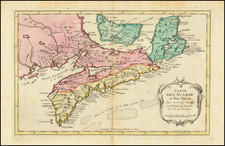Interesting pair of views of Halifax, Nova Scotia and Fredericton, New Brunswick, which appeared in a rare travel guide by Traugott Bromme in 1842.
In the mid-19th century, there was a significant wave of German emigration to Nova Scotia and New Brunswick. This movement was part of a larger trend of German emigration to North America during this period
One of the main reasons for German emigration to Nova Scotia and New Brunswick in the mid-19th century was the political and economic instability in Germany at the time. Many Germans were attracted to the prospect of starting anew in a new land, where they could escape the turmoil and find greater opportunities. Another factor that contributed to German emigration to Nova Scotia was the desire to practice their own religion. Many Germans were members of minority religious groups, such as the Mennonites and the Dunkers, who faced persecution and discrimination in their homeland. In Canada, they were able to freely practice their religion and establish their own communities.
One of the most notable contributions of the German immigrants to Fredericton was the establishment of the Christ Church, a Lutheran church that was built in 1856. The church was the first Lutheran church in Fredericton.
One of the most notable contributions of the German immigrants to Halifax was the establishment of the Emmanuel Evangelical Lutheran Church, which was founded in 1868. The church was the first Lutheran church in Halifax.
Traugott Bromme was a traveler and publisher best known for this immigration guides for German migrants. Born in Anger, in Saxony, Traugott was orphaned at a young age. He emigrated to the United States at age eighteen. There he studied medicine, traveled extensively, and supposedly served as a surgeon in the nascent Colombian Navy and was imprisoned in Haiti. He returned to Germany in 1824, where he became a partner in his brother-in-law’s bookshop in Dresden. He began to publish books on the topic of immigration at this time.
In 1833 Bromme returned to the United States, this time to Baltimore where he took up a partnership in a publishing house, Scheld and Company. Here he began to publish his guidebooks targeting German immigration to America, which included maps after those of Henry Schenck Tanner. By 1840, he had again returned to Germany, starting a bookshop in Stuttgart. In 1846 he once again sailed to America, spending three years there. By 1849, he was back in Germany and seemingly returned to publishing. All of his outputs were geographic in nature and include several wall maps.









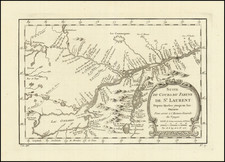
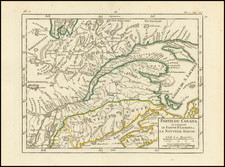
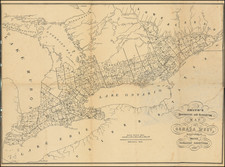
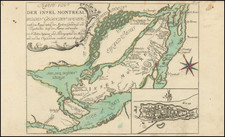
![[ Large Cape Cod Inset ] The River & Gulf of St. Lawrence, Newfoundland, Nova Scotia, and The Banks Adjacent, From The English Admiralty & French Marine Surveys. . . . 1844. Additions To 1857.](https://storage.googleapis.com/raremaps/img/small/85637.jpg)
